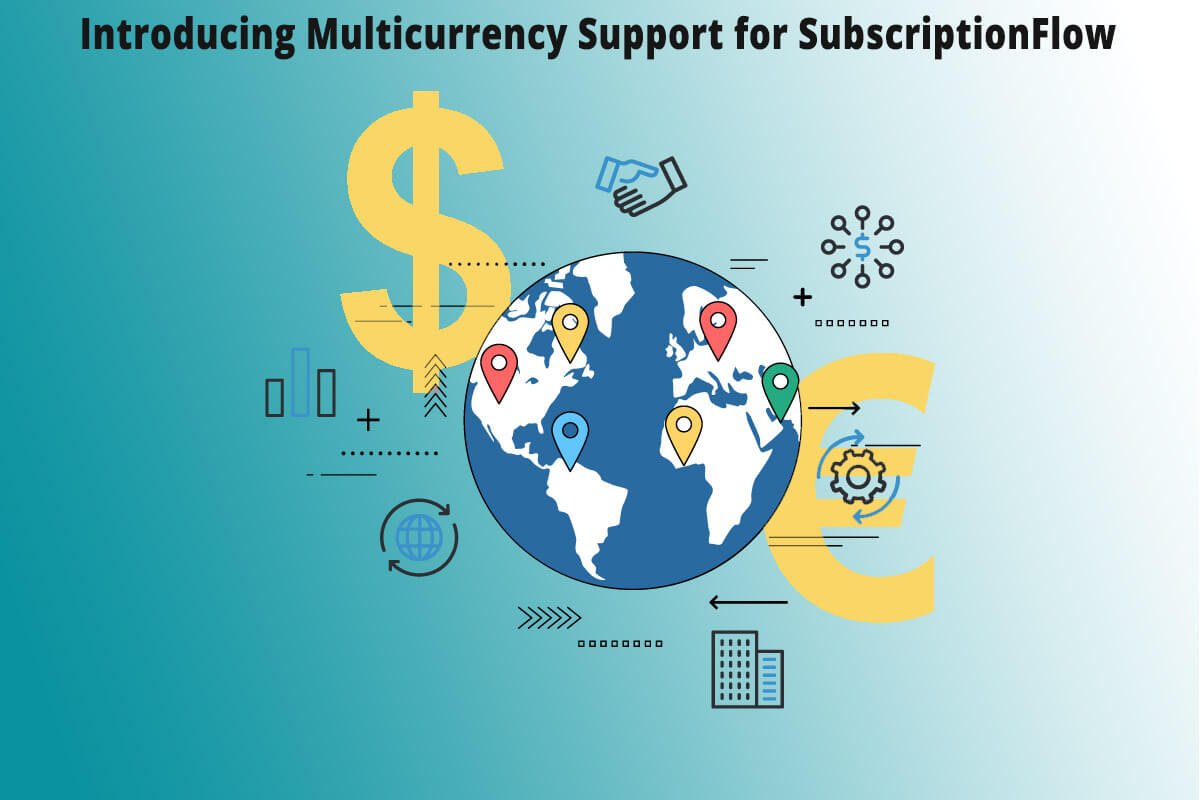
Stripe vs Adyen – Decoding the Best Payment Solution for 2025
The B2B market has witnessed some great multiple payment processing systems over the years. The two that have emerged out to be the best among thousands of others, are Stripe and Ayden. Although they’ve been positioned against each other, with many companies rooting for one over the other, it’s essential to understand that they both belong on different stratospheres.
Stripe is renowned for its user friendliness, flat-rate pricing, and easy integration. These features make it the perfect fit for small to medium sized businesses, especially offering abundant flexibility for online businesses.
On the flip side, Ayden is more well-suited to cater to larger enterprises that have complex payment requirements. It uses an interchange-plus-plus model, and offers pricing customization based on business volume and needs. With a centralized framework for online, in-store, and mobile payments, Ayden aims for a broader global reach.
Each platform offers unique characteristics that meet various business needs. For example, Stripe’s flat-rate pricing benefits small businesses as it is straightforward whereas Ayden’s interchange++ model helps high volume businesses negotiate lower prices. Secondly, Ayden facilitates omnichannel integration for online and offline payments, while Stripe is centered on online transactions. Ayden offers personalization to large businesses, and Stripe is well-known for its developer-friendly tools.
What is Stripe?
Stripe is a decade-old payment software that serves as a global partner to many top names. Founded in 2011, its headquarters are located in San Francisco and Dublin. Stripe emerged as a payment gateway solution that many were happy to get behind.
One of the major pros of Stripe is its global reach and diversity of the payment solution it offers.
Stripe offers multiple options to business owners and allows its users to process and collect payments in a matter of seconds. Stripe supports multiple currencies. You can get access to Stripe by signing up on its website or get access to it as third-party integration.
Stripe offers multiple services including invoicing, billing, and sales tax automation.
Stripe Workflow
Here’s how stripe basically works:
- Customer enters card information, online or in-person
- The data is encrypted by Stripe’s payment gateway
- Stripe as a payment merchant sends the data to the acquirer
- The payment gets passed through a credit card network to the cardholder’s issuing bank
- The transaction gets approved or denied by the issuing bank
- This information is passed from the issuing bank through the card network to the acquirer, then through the gateway to the customer – in the form of a message of payment acceptance or decline
Now stripe offers two products Stripe Connect & Stripe Checkout. Checkout is the mobile checkout with an API that creates a Stripe-hosted payment page. Connect is customizable, works for small businesses, is available in multiple currencies, and has pre-made interfaces available.
How recurring payments are handled in Stripe using SubscriptionFlow
SubscriptionFlow stands at the forefront of platforms that extend their payment integration services to payment processing systems like Stripe and Ayden.
Starting off with Stripe, SubscriptionFlow automates recurring billing and payment processing. By getting recurring billing, you can offer customers several payment methods that can exponentially increase your conversion rate as customers feel heard and seen. This leads to a frictionless checkout experience.
The automated subscription system makes invoicing, billing, and tax calculations hassle free. Once integrated, you can easily update pricing plans and set prices for clients as you see fit, strengthening relationships with your customer base for long term success.
Moreover, Stripe with SubscriptionFlow helps businesses make informed decisions by allowing them to track customer activity, get reports on credit histories, invoices, and taxes. Not only is the dashboard customizable, but customers have the option of self-service portals. They can easily manage their subscriptions, whether to downgrade or upgrade. With the advanced and user-friendly interface, you can increase customer satisfaction.
The world is fast moving towards a direction where agility is preferred over any other quality. Stripe leveraged with SubscriptionFlow provides you with just that. You have the option to integrate different applications and software. Additionally, with a single sign-on (SSO), you can access all integrated applications. Combined with SubscriptionFlow, Ayden’s payment operations become optimized helping merchants seamlessly carry out their payment activities.
What is Adyen?
Adyen is a Dutch/European payment company that works as a payment service provider and payment gateway. It is one of the most known payment processors in Europe. Adyen was founded in 2006. Its headquarters lies in Amsterdam, Netherlands.
Adyen allows businesses to accept payments from, multiple sales channels. Adyen’s services are very specific and are not suitable for brick-and-mortar businesses or low-volume merchants.
Adyen has been given the status of an acquiring bank (European banking status). Adyen is being used by MANGO, Etsy, Uber, McDonald’s, etc. In 2018, eBay announced that it had signed an agreement with Adyen to become its primary payments, processing partner.
In 2020, during the COVID-19 pandemic, it processed a total of EUR 303 billion, a 27% increase year-on-year, with net revenue of EUR 684 million, a 28% increase year-on-year. It had expanded its operations to the Middle East, US, and Canada by 2021.
How does Adyen work?
Adyen acts as a payment gateway, payment service provider, POS for in-point transactions and offers risk management and local acquiring. It also has integration abilities for in-app or mobile payments.
The Adyen payment process starts at the POS terminal of a retailer; then the payment passes through a payment processing and risk management system to avoid fraud; afterward, the credit card network is used; and finally, the transaction arrives at the customer’s bank. If the payment is verified, a confirmation is sent back to the POS terminal through the various stages.
How recurring payments are handled in Ayden using SubscriptionFlow
Moving on to Ayden, it is one of the most widely known payment processing platforms, available in more than 20 countries for merchants based in UK, US, and some European regions.
Ayden deals with high volume of transactions, and is suited for large enterprises. However, managing a huge database naturally gives rise to security concerns. In this regard, Ayden ensures end-to-end encryption of your data, and offers robust revenue optimization tools.
Ayden integrated with SubscriptionFlow provides advanced security features, and accepts multiple payment methods with PCI-compliant security. Furthermore, Ayden with SubscriptionFlow includes built-in currency conversion, and charges a processing fee in addition to a payment method fee per transaction.
Stripe vs. Adyen: 5 key components to know
Stripe is a globally prominent name and Adyen shares popularity in Europe. Both have many similarities but the main difference between Stripe and Adyen to remember is that Adyen is a merchant account provider whereas Stripe is a merchant aggregator aka a payment service provider.
1. Pricing: Stripe vs Adyen
You can see a clear difference between Stripe and Adyen based on pricing.
Stripe has a very simple pricing model. For local (online) transactions there is a standard fee of 2.9% + $0.30 per transaction. For in-person payments, the fee is 2.7% + $0.05 per transaction There is no monthly fee, no setup fee, and no integration fees. For all international transactions, it costs you 3.9% per transaction.
Adyen’s processing fee is region-based. Adyen charges a processing fee plus payment method fee per transaction. For instance, credit card fees for Mastercard and Visa transactions are based on an interchange ++ pricing model.
There are no monthly fees, setup fees, closure fees, or integration fees with Adyen. For ACH and wallet payments, fees are specific to the respective payment method.
The winner depends on which region you are basing your transaction in. Both Stripe and Adyen offer reasonable pricing models.
2. Countries, Regions & Currencies
Stripe dominates the US market since it is located at the heart of the Bay area. Stripe is recognized as one of the best globally. Stripe is available in 47 countries and can process over 135 currencies.
Adyen dominates the European and North American markets. Adyen is a leading provider of omnichannel payment solutions with over 250 payment methods and 187 transaction currencies.
3. Payment and Payment Methods
Stripe has a simple signup process after which you can get access to all its standard features. Stripes accept all major credit and debit cards, Apple Pay, Google Pay, ACH transactions, digital wallet transactions, WeChat Pay, and multiple international payment methods.
Adyen allows customization of payment solutions meaning you get to accept and process payment in a way that is most suitable to your business. You can integrate your checkout by a pre-made interface and create your payment form, payment flow, etc.
Adyen accepts multiple payment methods based on the region including but not limited to Boleto, Elo, Google Pay, AmEx, Apple Pay, Maestro, Oxxo, PayPal, UnionPay, and V-Pay.
4. Ease of Use
Stripe is known for its ease of use. It offers multiple easy and vast integration options, checkout customization, and reliability. It has fast and easy API tools and is extremely mobile-friendly.
Adyen is not ideal for smaller businesses or low-volume transaction businesses. Adyen concentrates on optimizing the “behind-the-scenes” of the actual payment process. Stripe focuses on the front-end experience.
5. Developer-Friendly
Stripe is as developer-friendly as they come. Most developers want to grab the chance to work on Stripe. Adyen needs more foothold in the developer community. It is not to say that Adyen is not developer-friendly but it lacks the charm that Stripe offers readily.
Which is more reliable for B2B business?
Stripe and Ayden go head-to-head in platforms that offer payment processing services to B2B businesses across the world. Both are reliable, but they have different strengths to offer. So, let’s break them down.
Stripe is a complete platform with robust APIs that are easily integrated. It’s a developer-centric company that aims to offer the best customer experience. Stripe likes to keep it simple, and that’s the reason why it’s so popular. It prides itself on being a feature-rich payment suite, and offers a smooth process from managing subscriptions, enhancing revenue, minimizing fraud, to scaling your business.
Ayden, founded in 2006, is a comprehensive payment service provider, offering a seamless payment experience for users. It puts emphasis on efficiency and scalability, and has a unified solution approach that supports online and offline transactions. Furthermore, it utilizes SDKs to streamline payment integration into mobile applications. Ayden entertains multi-currency payments that help you have a global reach.
To sum it up, Ayden and Stripe stand firmly on their own grounds, offering the services they claim to offer. It is up to the businesses to decide which platform they fancy more depending on factors such as business size, pricing preferences, global reach targets, and customization choices.









